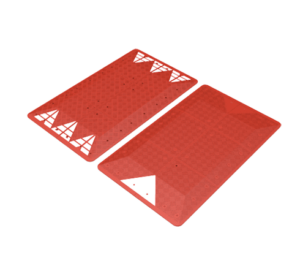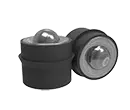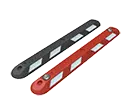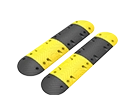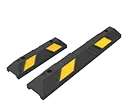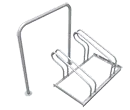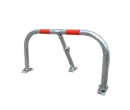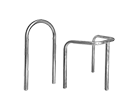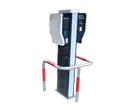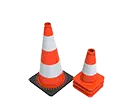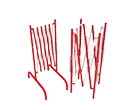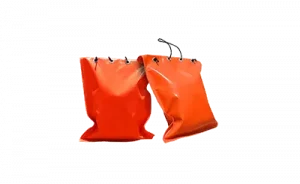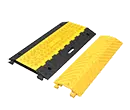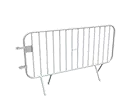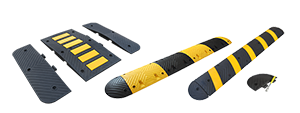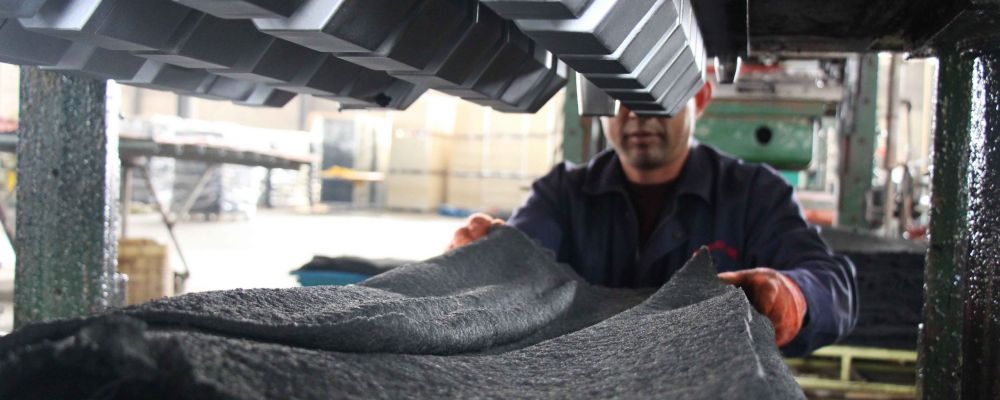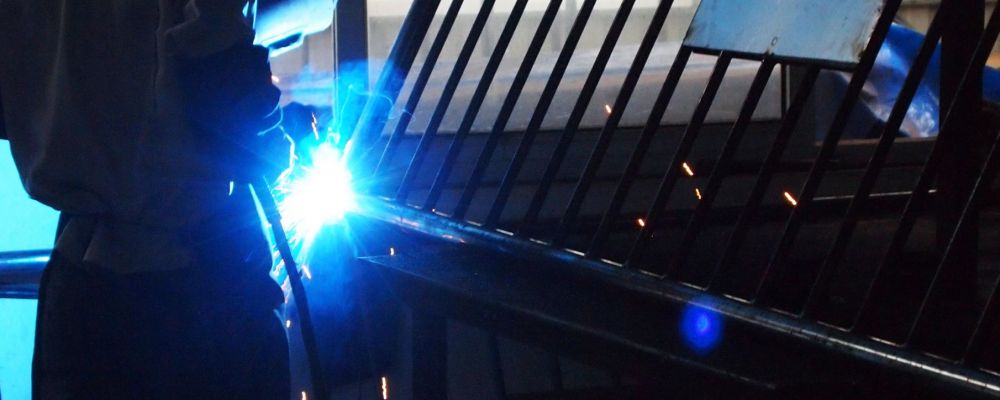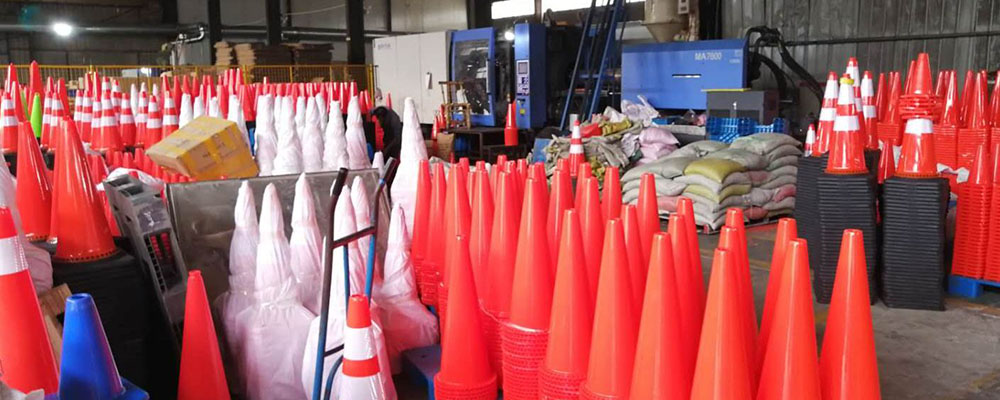Everything you need to know about rubber speed bumps
Rubber Speed bumps, or sleeping policemen, are among the most widespread and successful traffic inhibitor solutions.
If you’re unaware of them, rubber speed bumps are a type of hurdle that can be of several shapes on roads that cause the vehicle’s speed to reduce.
Except for rubber, there are many other useful materials for speed bumps.
These traffic control measures have been around us since the emergence of fast vehicles. Speed bumps were essential traffic calming measures to control the fast-speed vehicle and ensure road traffic safety.
This traffic-reducing measure first came into existence in 1906. However, the first concept of speed bumps was not similar to a present-day speed bump.
There was some news in New York where pavements, crosswalks, and sidewalks were raised by a few metres, and the general overview of speed bumps came into being.
However, the first speed bumps concept came in 1953 when Arthur Holly designed traffic speed bumps for the first time. Officially, the very first speed bump existed in Europe in 1970.
Since the first speed bump, many variants of traffic control have been developed. Let’s review the different types of traffic safety measures without further ado.

Different types of traffic-reducing measures
There are plenty of alternatives for traffic control. They differ mostly in their structure, size, height, and width.
Following are some of the main types.
- Speed Bumps are the most conventional and widespread traffic control measures.
Mostly, they can be high as 100 mm, effectively reducing a vehicle’s speed. They are commonly shorter in width but longer in height.
Also, speed bumps tend to have a lower spread curvature, making them suitable for residential areas, sharp turns, roundabouts, and places with a high pedestrian count.
- Speed Humps are another common traffic safety measure. They are commonly wider than speed bumps but have a lower height.
These ramps also look more like a part of roads and can slow vehicles to a speed of 20-30 mph. However, the speed reduction depends on the height of the speed hump.
- Speed Cushion is another unique traffic-calming alternative involving a series of speed humps with gaps between them.
The basic underlying reason for this unique structure is to allow emergency vehicles with wide wheelbases, like ambulances, buses, and fire trucks, to pass through without restriction.
On the other hand, it can help reduce most vehicles’ speed.
- Speed Tables are unique traffic control measures for Federal Highway authorities that are much longer and flatter than speed bumps that reduce vehicle speed by a minimal effect.
They are suitable for streets and freeways where the speed exceeds the limit of 40 mph. Speed tables are generally used to ensure highway safety.

Importance of rubber speed bumps in this Era
Rubber Speed bumps have been an indispensable tool for the transportation department.
Specifically, one of their main purposes was to slow down the traffic in pedestrian zones where their count was high. Fortunately, these speed breakers have successfully alleviated the adverse effects of speeding.
Speed bumps in a neighbourhood, school zones, hospitals, private roads, street parking lots, and sharp turns are achieving the basic tenet of their installation. Speed bumps can reduce the vehicle’s dynamic speed to 6-12 metres (depending on the height of the speed bumps).
Ultimately, the low speed leads to reduced mishaps on roads. Fewer accidents have been reported of car collisions with pedestrians and handicapped individuals, leading to fatal injuries.
Therefore, reflective speed bumps on the road are not frivolous, and they have successfully achieved their basic principle of avoiding hazards.
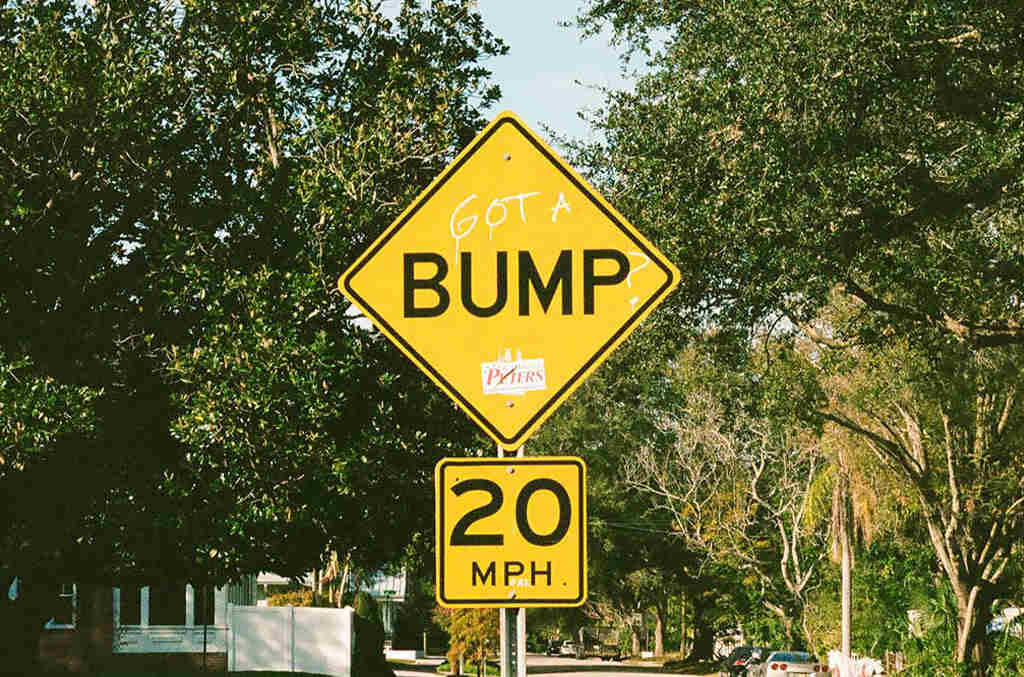
Speed bumps are perfect traffic routing measures
The speed reduction helps pedestrians cross easily and without getting any injury. Besides, using stop signs, pavement markings, traffic cones, and speed bumps can help ensure pedestrians’ safety.
Speed bumps at sharp turns and lanes can also avoid collisions with bicyclists. Therefore, these traffic management solutions are ideal for speed control.
Secondly, rubber speed bumps and speed humps play a strategic role in diverting the huge turnaround of traffic volume at a specific place.
By installing speed bumps in specific areas, vehicles avoid those places, which helps regulate traffic volume to the desired destinations. Therefore, speed bumps effectively curb traffic by regulating traffic from high-traffic areas to low, reducing congestion.
Additionally, curb extension with these speed bumps narrows the road and helps speed control. Furthermore, speed bumps and ramps are also effective in places with extreme weather conditions. In snow-capped places, motor vehicles tend to skid on roads.
With these traffic control measures, there is less chance of accidents because skidding incidents can be reduced.
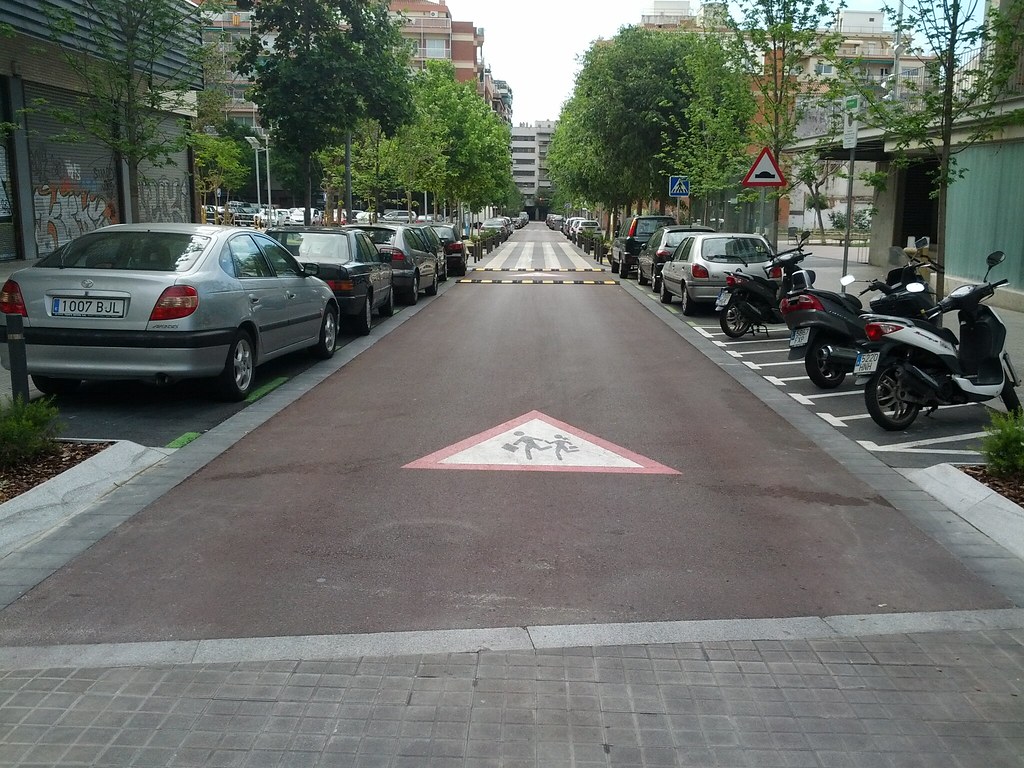
Criticism of speed bumps
While there has been praise for installing speed bumps to control traffic speed, several classes constructively criticise using rubber speed bumps.
Their first contention is regarding the safety of bike riders. Riders, specifically motorists and bikers, tend to speed on streets, and an unknown obstruction can make them lose control of their vehicle, leading to fatalities.
This contention holds, but the main purpose of installing these speed bumps is to slow down speeds. Therefore, motorists should always drive at a reasonable speed.
Also, traffic control signs, speed limit signs, and road signs can help make these bikers aware of the speed limit, which can help them ascertain a reasonable speed.
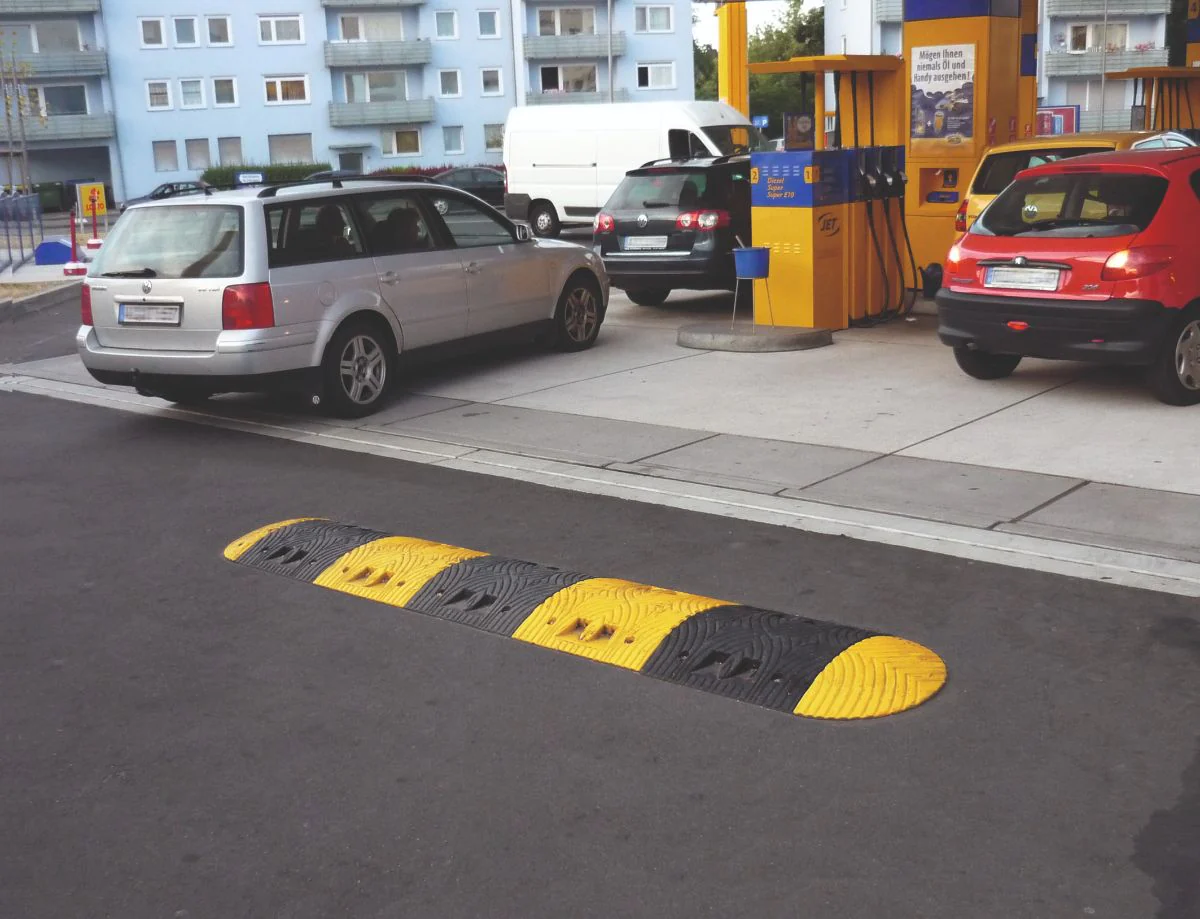
Speed Bumps can cause pollution and property damage
Secondly, the constant fluctuations in acceleration can cause emissions, leading to pollution. Many environmentalists come cracking to support this contention. While this contention stays true, vehicle use is questionable because it creates carbon emissions.
With or without speed bumps, the emissions would still happen. So, installing speed bumps is better because it will reduce accidents.
Moving on, several people protest that high-speed bumps can hit their motor vehicle’s body, leading to wear and tear over time. While this can be a reasonable issue, the driver must be aware of the speed limit and considerably reduce speed when spotting a huge obstruction.
In most cases, speed humps and cushions don’t cause any damage because they are already quite low.
Several hospitals and emergency vehicles argue that speed bumps can cause a delay in emergency services, leading to undesirable repercussions. Speed cushions come into play here because they allow emergency vehicles with wide wheelbases to pass without intrusion.
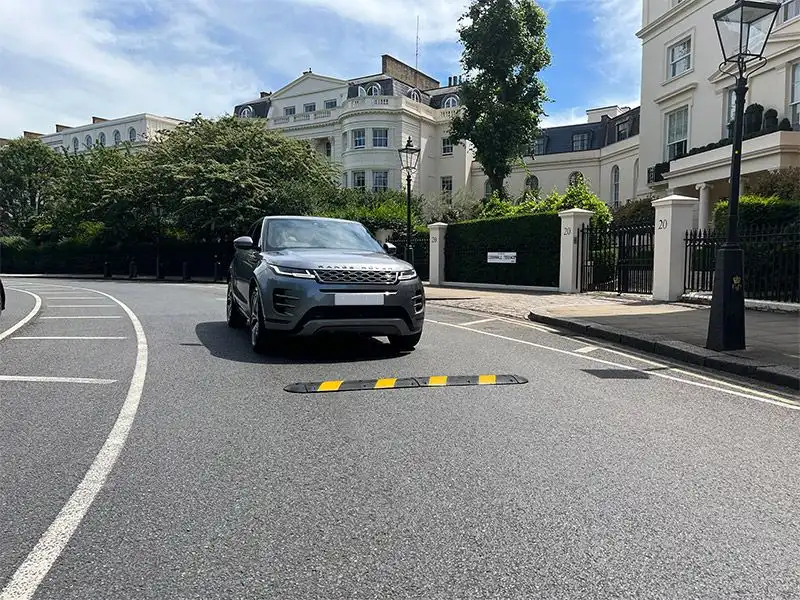
Modern-day speed bumps
Considering many complaints, speed bumps are changing significantly. Modern-day speed bumps are completely different from conventional speed bumps. Now, transportation engineers are developing new ways to create speed bumps using recyclable materials.
Modern Day Speed Bumps are made in accordance with the ordinance and regulatory signs of various jurisdictions. Before you set out to create a speed bump, there are various warning signs in different jurisdictions.
That’s right! Modern-day speed bumps have recycled plastic or rubber embedded in their structure.
However, the era of concrete speed bumps is still alive. People are now transitioning to new ways that make traffic calming measures quite durable, personalized, non-destructive, and driver-friendly.
Companies are trying to incorporate people’s feedback and constructive criticism into their work to create the most updated speed bumps. Nevertheless, let’s debrief the structure of modern-day rubber speed bumps.
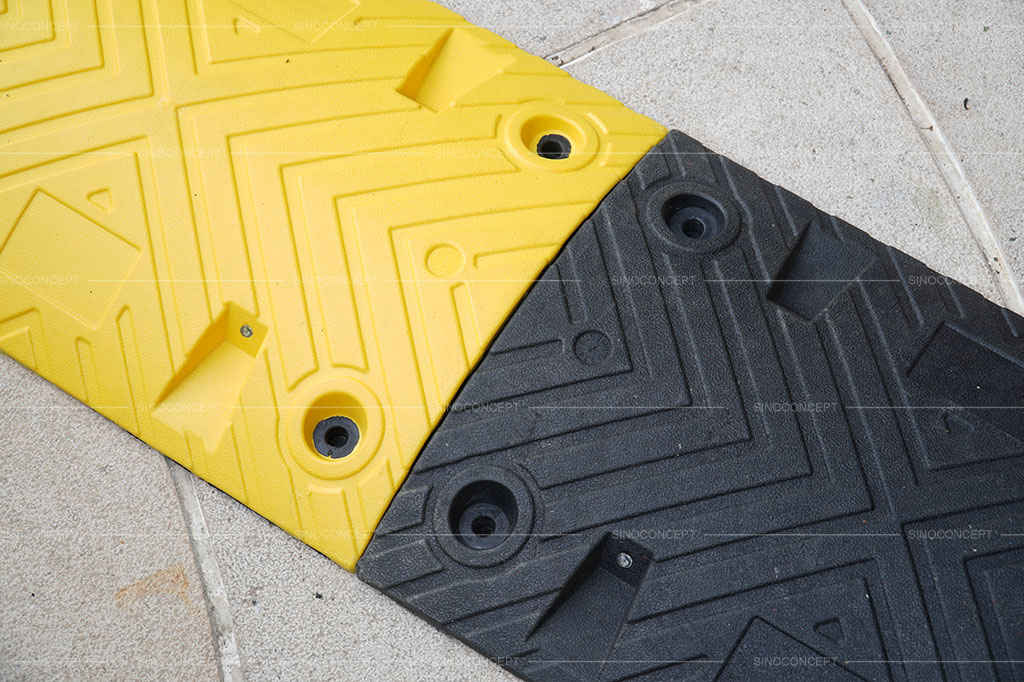
Structure of modern speed bumps
In past, the primary material to make speed bumps was asphalt and concrete. However, now transportation engineers are using high-quality vulcanized rubber to create speed bumps that are resistant to harsh weather.
Moreover, there has been a growing trend to create speed bumps of black and yellow colours because drivers can easily spot these bright reflective tapes. Some companies are even allowing people to get personalized colours.
You might not believe it, but now DIY temporary speed bumps are available. The kit comes with all the instructions and tools like bolts and tapes, and you can interconnect two platforms together to create bumps.
Since they are interconnected, you can remove them as per your wishes.
While rubber speed bumps are gaining popularity, companies are taking in safety factors to create bumps. They incorporate cat eyes in the speed bumps so that vehicles can easily reflect, and the driver can easily spot them in low resolution.
These reflector traffic devices also have water channel drainage systems that don’t hold water and flush off through the channels.
So, the modern-day rubber speed bumps continue to revolutionize by adding more to satisfy consumers and make them happy.
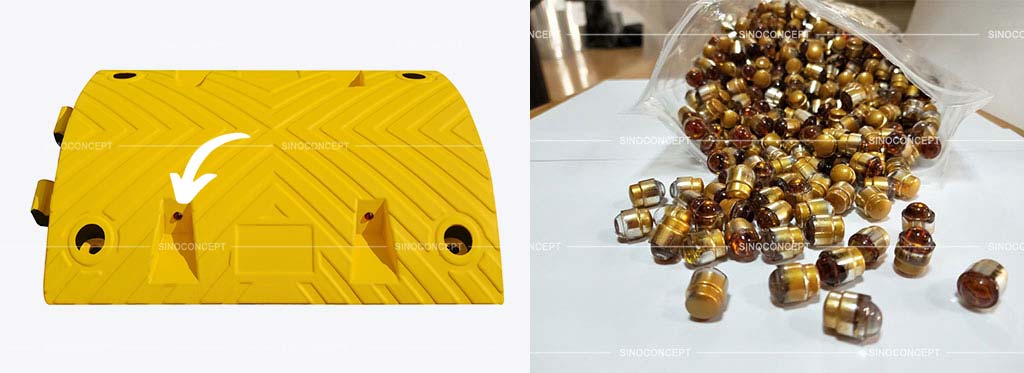
Conclusion
A blessing or destruction? The opinion varies from person to person regarding rubber speed bumps. One thing is for sure: Rubber speed bumps are playing a marvellous role in reducing dangerous accidents.
Since they are now available in kits, you can create one yourself. If you have a private road or driveway or need some security in your street, it’s high time that you realize what you need as a property owner.
Rubber Speed bumps are an excellent solution that can help you lower your vehicle’s speed in your neighbourhood and reduce the annoying traffic noise. On top of that, your street will be saved from street racers.
Act now and select your traffic control measure from a huge selection, exclusively from the Sino Concept.
To learn more, we advise you to refer to the following pages:

